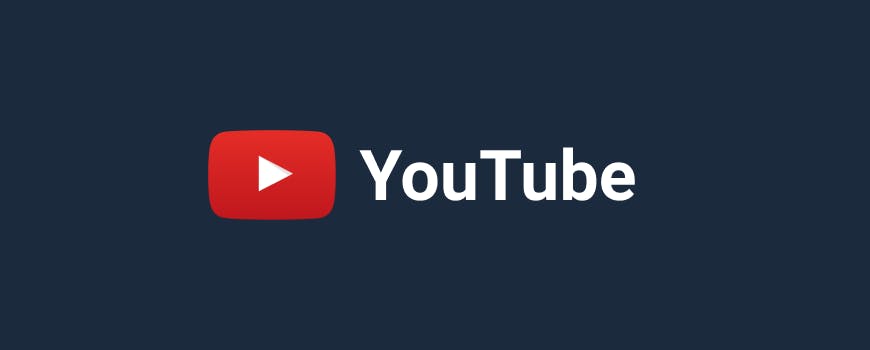YouTube videos ranking matters just as much as your web content does, if not more. Here's everything you need to know about YouTube SEO and the most popular strategies to implement in 2024.
Google's largest media sharing platform is almost as synonymous with videos as Google itself is to search engines. YouTube began as a passion project, but after Google took over, the number of viewers, content creators, and the sheer number of videos uploaded each day has skyrocketed. With more than 500 videos being uploaded to the platform every minute, YouTube is undisputedly the most extensive virtual media library that the human race has collectively created.
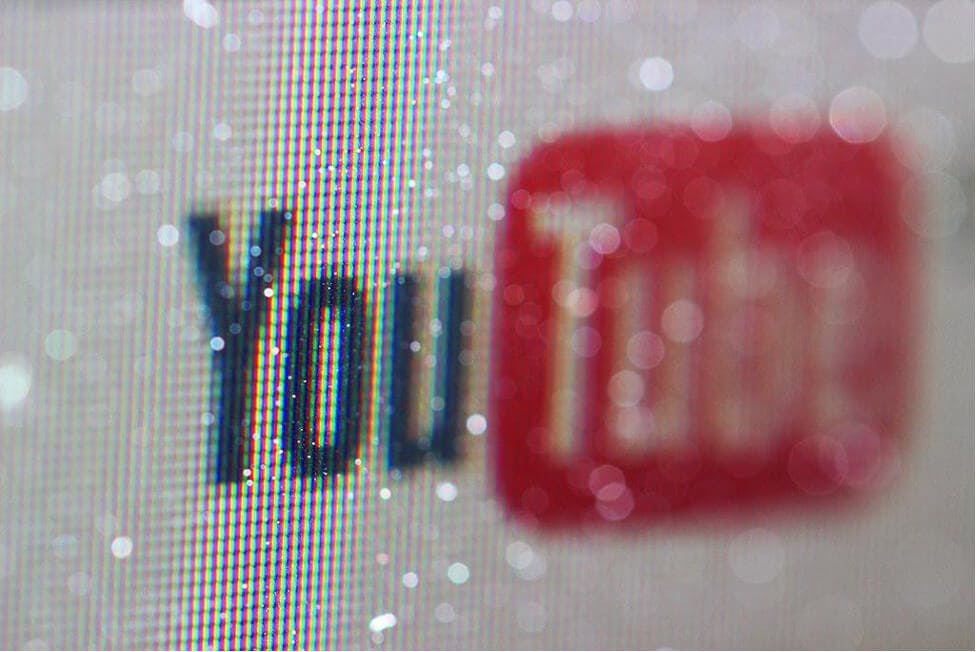
More than just a neat way to watch some funny bloopers and those viral compilation videos, it has become a hub for marketing too. For years, businesses and professionals paid little heed to inbound marketing and the value of creating content specifically for the customer base.
Google set a precedent for quality and actionable content with SEO (search engine optimization) and continues to evolve it. The practice has created guidelines for website owners to craft content that added value to the readers while helping them reach their target audience. Over the years, multimedia content has taken over, but search engine optimization isn't going anywhere.
YouTube SEO – Understanding the Basics
Content creators are now competing on YouTube too, and the only way to stand out of the heaps of videos out there is YouTube SEO. Similar to how certain websites rank higher on the Google SERP (search engine ranking page), several factors determine how far up your video appears when YouTube search is used to look it up.
After Google, YouTube is the largest search engine globally, with more than 3 billion hits every month. Hence, it makes sense that search engine optimization dedicated to YouTube should be a point of focus.
What is YouTube SEO?
Simply put, YouTube SEO is what you term as the practice of creating quality video content and optimizing it to rank highly on the YouTube search page. Every time you look up a particular keyword or phrase in the YouTube search bar, the structure of results displayed is eerily similar to that of the O.G. search engine – Google. The very first search results will most likely be sponsored ads, with the organic search results right after that.
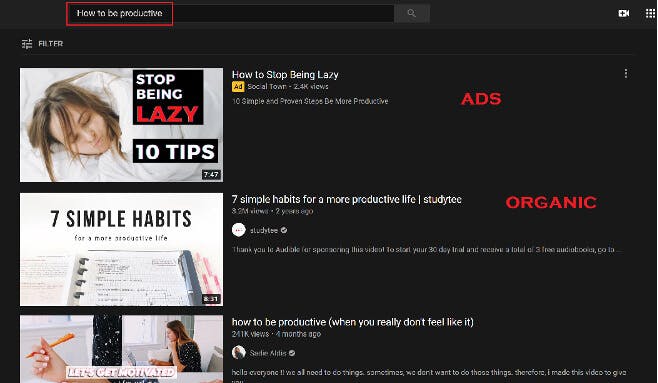
Over the past few years, Google has started displaying video content, primarily from YouTube, within its SERP results. While Google search video results are significant for harnessing the power of the search engine towards drawing more traffic towards your YouTube content, it should not become the primary focus. YouTube videos drive most of its traffic through the YouTube search feature, not through Google search, since only a select few videos make it to the top spot on Google.
Tip: Use SnapDownloader to download videos from anywhere on your PC.
How does the YouTube algorithm work?
Since its inception in 2005, YouTube has seen phenomenal support from the creative community, topping over 2 billion users worldwide. In the early days of the video platform, the number of clicks your video got determined your rank on the YouTube search, which was the beginning of the "clickbait era." Soon enough, Google updated the discovery system to be based on video view duration while encouraging content creators to focus on the quality of the content and not the duration of each video.
By 2016, Google implemented next-generation ML (machine learning) into the mix, with a recommendation architecture system that promoted content with the most "user satisfaction." Since machine learning isn't foolproof just yet, and the impending takeover of Skynet is still a few decades away, Google is moving towards a more humanized approach to search visibility.
Continued social pressure from activist watchdogs has also put the dark underbelly of "borderline content" (harmful or misleading content) under the spotlight. YouTube does not want content creators to think that the search algorithm is a celestial entity since the user's mood entirely defines it. The primary goals of the YouTube algorithm are to help each viewer find the right videos and keep these users engaged in increasing the overall watch time.
YouTube SEO Tactics – Reaching the Top

If you've been in the online marketing industry long enough, you've probably come across a handful of SEO and analytics tools. The one common denominator among all of these services is the ability to find out the correct set of phrases and keywords to target, finding supplementary content, and correctly tagging the content for faster recognition by Google's crawlers.
Sure, the number of YouTube subscribers and the quality of content you've been pushing video after video are some major deciding factors. But disregarding YouTube SEO completely is not going to get you anywhere, especially as an up and coming content creator on the platform. Let's take a closer look at what SEO specific practices you can implement to rank YouTube videos and make it to the top of YouTube search results.
1. Keyword is Key
Over the years, keyword research for Google has become a tedious, and often, a pointless exercise, mostly due to the ever-evolving search algorithm. Over the years, Google has shifted from keyword-centric ranking to contextual ranking, which puts good-quality, engaging content over those that simply stuff the keywords in like a turkey on Thanksgiving. YouTube, however, is different since it relies more on the natural keywords, and results are display based on it.
For Beginners:
The most incredible tool to use when looking for keywords for your video is the YouTube search itself, which displays a list of suggested keywords with the autocomplete tool. The most accurate indicator of what keywords or phrases users are typing it, the search tool will list every related video topic to the term you are typing in.
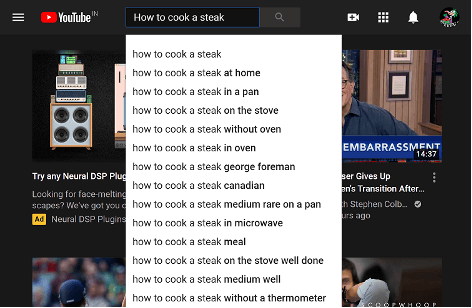
Ideally, you'd be doing this exercise to find out which keywords to use for your YouTube video, but at times, it can also help you create the right content. For instance, if you are looking up a specific term that does not offer too many results, it could be a positive indicator for you to move forward and create a video on it. With little competition on the particular keyword, your chances of ranking at the top for it increases significantly.
For Pro users:
YouTube search might not be enough for serious users who are looking to push out quality content one video after another. A mighty tool that is available for free is Google Keyword Planner, which is not only the holy grail for Google SERP ranking aspirants, but for YouTube videos as well. Rather than entering one keyword or target phrase at a time, Google Keyword Planner lets you do it ten searches at a time.
To get started, go to this page and click Go to Keyword Planner. If prompted to sign in, enter your Google login credentials. Click on Tools & Settings from the top navigation menu, then select Keyword Planner. Click Discover new keywords and type in a keyword or topic for which you want to make a video. You'll now get a list of keyword ideas along with their average monthly searches and competition.
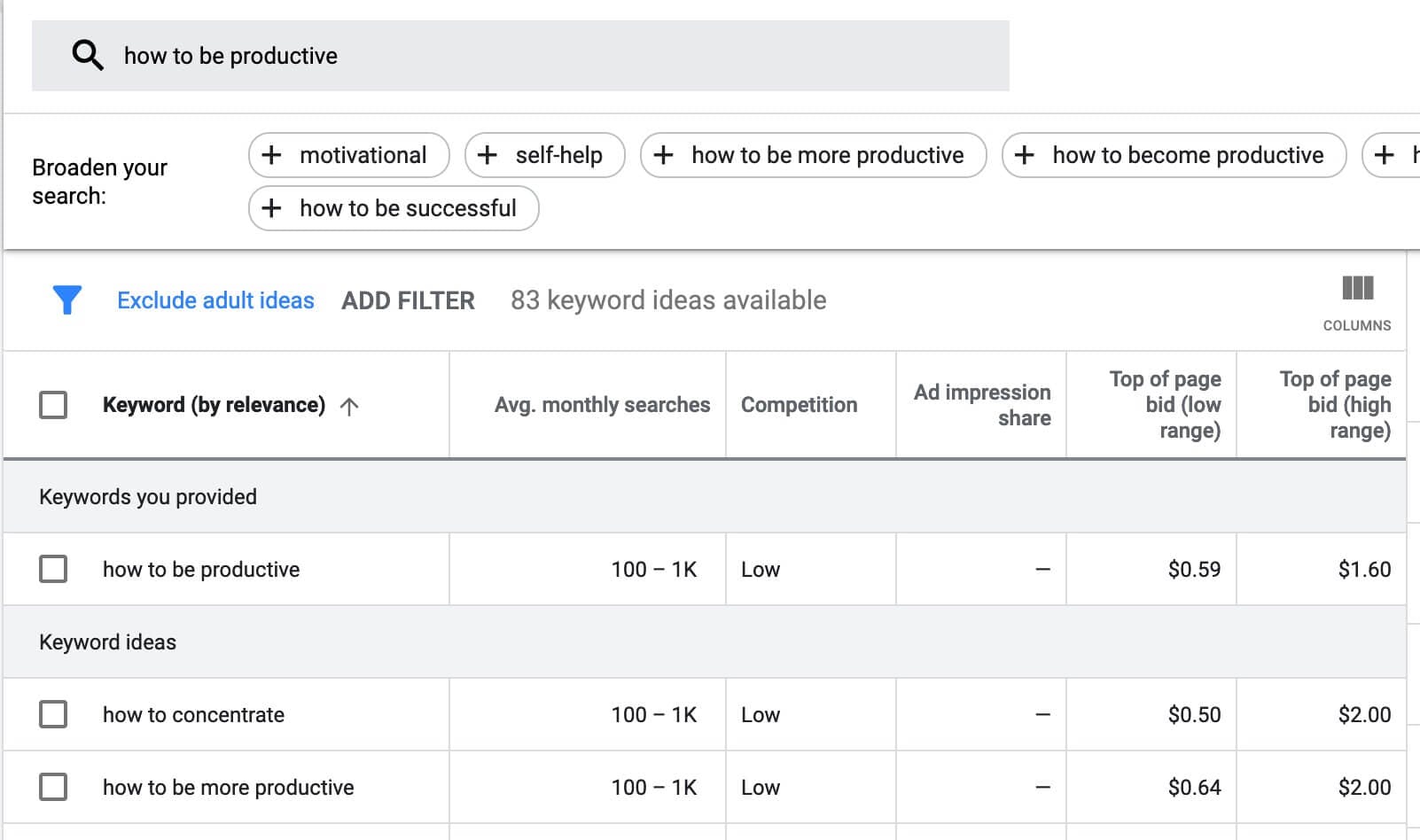
When seriously working on finding the right keywords, you might have to go through the Google Keyword Planner dozens of times just for one video. A vital feature of the service is the ability to sort keywords based on their length, which is a great way to find long-tail keywords and rake in plenty of clicks.
Additional tip: A secret trick that YouTubers often step over is to include the keyword into the video itself. While the algorithm is not advanced enough (yet) to recognize what you're speaking about, the service is able to auto-generate subtitles for the video. The text from these subtitles is also processed by the YouTube algorithm to understand the context of the video. Speaking the primary and long-tail keywords within the video content naturally might be the secret ingredient to your YouTube success.
2. Use catchy and attractive video titles
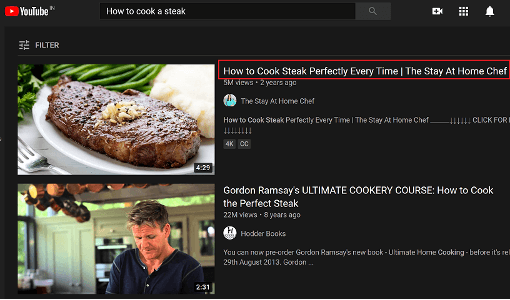
Consider the video title as the welcome mat to your video, and you always want the viewer to be invited and intrigued by it. Landing a headline for the video that accurately describes the content and piques the interest of the viewer is essential to getting that CTR (click-through rate) up in the sky. At the same time, you also need to make sure that the video title includes the keyword you have so tediously worked on finding.
Albeit, there are two different ways to create a video title – one that solely entices the user to click on the video and watch it, while the other gives you a clear idea of what the video is about, right from the title itself. Depending on the kind of content you are creating, there is always room to experiment with the YouTube video title to see which one works best. As a rule of thumb, it is best to keep the title around 45 – 48 words for the best chances of visibility.
YouTube isn't designed like Google when it comes to changing the video titles and descriptions in the search results. Unlike Google SERP, where a change in the webpage title and meta description can take months to crawl, YouTube does these changes in minutes. You don't have much to lose even if the title change doesn't go your way since you can always change them back without any significant loss in search visibility.
3. Thoughtful video descriptions
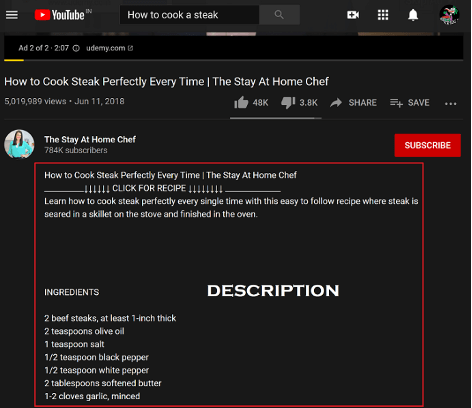
The video description is the only place of written content you have to put your video at the top of the search results on YouTube, and it should be used wisely. Since YouTube algorithms actively scan the video description for the relevance and substance of the video content, it cannot be left half-baked or, even worse – empty. While video descriptions are usually a slot for YouTubers to plug their merchandise, redirect to sources of the video content, and share their social media handles, these are some additional elements to add there:
- A summary or brief description of the video is about, and include your target keywords and phrases naturally.
- A short bio of the YouTube channel or yourself for adding a personal touch to the content.
- External links to other videos from your channel that the viewers can also watch.
- Links to the website, dedicated landing pages, or subscription links to the email newsletters.
- A notifier for viewers to subscribe to your channel and turn on the notification bell icon.
Avoid keyword stuffing in the description since it does not seem to help you with the ranking. Try introducing the target keyword within the first 25 words of the video description, and limit the total word count of the video description to around 250 – 350 words. There's more to marketing than just the video itself, so always make sure that you provide a definitive call to action links that directly engages the user towards the product or service you are marketing.
4. Video Tags and Categories Matter

While they may not be as important as the video title and description, but discounting the relevant tags is not a mistake you want to make. Using the right tags with your videos not only helps users identify the core element of your video and the value it has to offer but also helps the YouTube algorithm categorically rank it. Start off by using the primary keywords as tags, but remember to keep it clean and weed out the irrelevant ones since YouTube could penalize you for exploiting the feature.
Selecting the right category for your YouTube video is an effective way of grouping your video with other popular ones from the genre, increasing your chances of visibility. Pinpoint, who are the top creators in the category you're selecting, identifying the view pattern of the audiences for similar channels, and observing the qualities shared between your content and other creators from the same category will help you settle for the right one.
5. Unique and Attractive Video Thumbnails
The first thing to grab your attention when looking at any video on YouTube is the thumbnail. No matter how impressive your content is or how well you execute the YouTube SEO to bring the video to the top of the list, your click-through rate is going to be abysmal if the viewer is not tempted to click on it instantly. The thumbnail should immediately give you an insight into what the video is about while balancing the art of being eye candy and avoid becoming clickbait material at the same time.
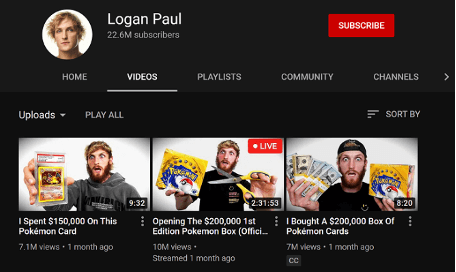
Depending on the overall theme of your video content and how formal or easy-breezy you want to keep things, the thumbnail theme can vary. You can either go for a uniform approach with the same fonts and color scheme for all the thumbnails on your YouTube channel or try variations that pop out from the rest and compel the user to give it a click. Either way, there are a few tried and tested tips for creating thumbnails for a YouTube video:
- Use a custom thumbnail with a minimum image resolution of 1280 x720 pixels at the size of 2 M.B. or smaller.
- A combination of bold text and colorful visuals add to the overall appeal of the video thumbnail.
- Avoid white or black backgrounds that could very well make the video blend into the YouTube search results.
- Add a quick summary (a few words at most) into the thumbnail image to add some context for the viewer.
6. Optimizing the Channel Page and Playlists
While you're busy optimizing your videos, don't neglect the YouTube channel that hosts all of those videos for you. Optimizing the channel is nothing more than giving the channel a proper name, including primary keywords in the channel tags, and adding a well-versed, direct explanation of what the YouTube channel is about in the description. Maintain a ratio of not more than 1-2% of keywords in the Channel description, and that should do the trick.
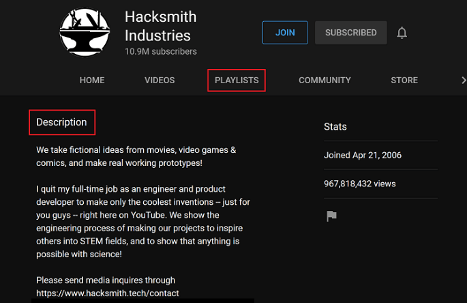
YouTube ranking trends suggest that a series of content tend to fare well in comparison to standalone videos. Since YouTube is designed to guide you to the next relevant video after one ends, having a series of videos naturally directs the algorithm to highlight the next video in line. Creating a playlist for each topic is an effective technique to increase user retention rate, which is also an important metric for YouTube to judge the quality of your channel's content.
Additional Tip: YouTube Stories is a feature that recently made it to YouTube and seems to have been inspired by the Stories feature on Instagram. Designed for high mobile user engagement, it allows you to give a preview of your latest video, have quick Q&A sessions with your subscribers, host polls to find out their opinion on your content, and so much more. A high user engagement by directly connecting with your subscribers is the key to growing the channel.
7. Share your YouTube videos across all platforms
After following the steps highlighted above to improve the SEO of your YouTube video, the work isn't over just yet. Social media is a powerful tool for user engagement, so you need to rally your audience across the different platforms and direct them towards the YouTube channel. If you're on YouTube, there's a good chance you started off with a more fundamental social media platform such as Facebook, Twitter, LinkedIn, and Instagram.
Cross-promotion of your YouTube video links across social media platforms with the intent of actively seeking more views is an encouraging technique. Sharing your latest uploads across social media platforms can not only direct new viewers to your content but also help establish your social media handles. Compared to YouTube ads, paid promotion on LinkedIn and Facebook is far more affordable, so you can also consider sponsored ads and direct the traffic to your YouTube videos.
YouTube SEO – Boiling it All Down
Rome wasn't built in one day, and neither is your strong followership on a video platform with billions of users and plenty of established names in every single niche you can find. But getting to the top of your YouTube marketing game with actionable SEO is the first step to success, and here's a quick summary of what you need to follow:
1. Research is Key: Even before you create a video, you must determine which keywords are the right fit for your video content. YouTube Keyword tools are a great way to find the right phrases and save you plenty of time down the road.
2. Optimizing Metadata: The target keyword should always be in the video title as well as the description since it helps YouTube test the video for the search phrase.
3. Optimizing Title and Thumbnail: For attracting the attention of the viewers and generating clicks, an appealing video title and a custom-made thumbnail are crucial.
4. Outbound Promotion: It will be tough to generate views without promoting the content on other social media and blogging platforms. You must also rely on sharing links, encouraging users to like, and comment on the videos, and share them across their circles.
5. High Audience Retention: Engagement is the name of the game, and the longer your videos are viewed, the more relevant the specific video becomes from the point of view of YouTube.
Wrapping Up
These are some of the best YouTube SEO tips for the growth of your channel. At the end of the day, your goal should always be to produce the best possible video content for your target audience. You can begin by deeply learning the needs of your audience and then create videos that are educational, interesting, and engaging. Once you've taken care of the end user's needs, it is then time to focus on improving your YouTube SEO and growing your YouTube channel.
The video-sharing platform's algorithm is based on machine learning A.I. and is designed to provide viewers with the best possible content based on their searches. If you focus on all the points mentioned above and follow them, expect a premier starting point. Managing to land a high click-through rate and being able to leverage viewer retention is what will help you score a high ranking in the YouTube search.
